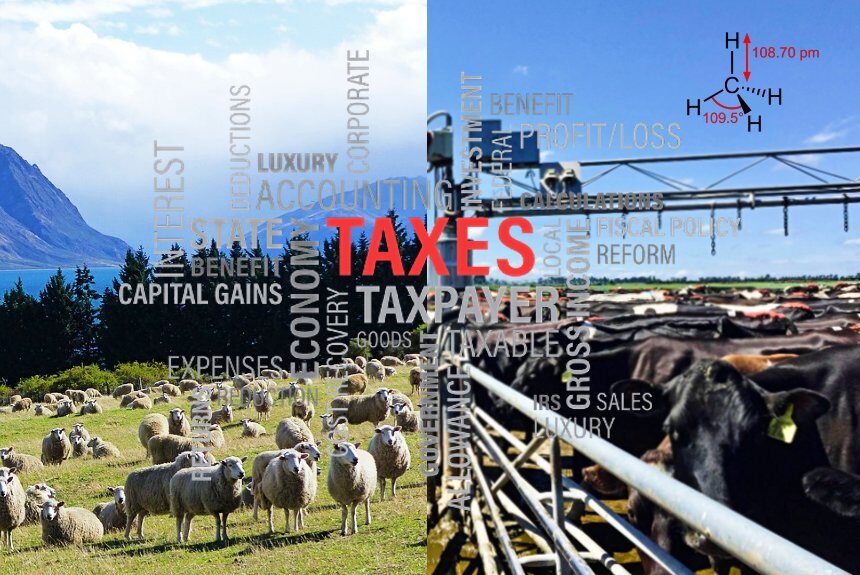New Zealand’s 6 million cows and 26 million sheep outnumber the five million people living there.
Agriculture emissions account for almost 50% of the country’s gross emissions, which includes methane emissions and nitrous oxide.
Biogenic methane or livestock production accounts for 88.9% of the country’s gross methane emissions, followed by nitrous oxide from nitrogen fertiliser and urine and dung deposited by grazing animals.
The New Zealand government has pledged to reduce methane emissions by 10% from agriculture and landfills by 2030, increasing it to a 24-47% reduction by 2050, compared to 2017 levels.
According to New Zealand’s Ministry for the Environment, reducing emissions from Agriculture will be significant in meeting the country’s climate goals and will enhance Aotearoa New Zealand’s reputation as a low-emissions and trusted provider of agricultural products, the agency says.
On 11 October, Prime Minister Jacinda Ardern, Agriculture Minister Damien O’Connor and Climate Change Minister James Shaw announced the proposal to price agriculture emissions, including biogenic methane emitted from cow burps and nitrous oxide emissions from urine and dung. The plan is to see New Zealand farmers pay for their emissions by 2025.
Farmers gathered around the country to protest just over a week after the Government announced its proposed agriculture tax.
Although the proposal is still under consultation, Reuters reports that farming groups have criticised the plan and worried about how it will account for on-farm forestry and what can offset such emissions.
Famers are also raising concerns about how emissions will be priced and how the programme will be governed.
Bryce McKenzie, the co-founder of Groundswell New Zealand, which organised the protest, says, “Let’s work out how it’s going to be best for the farmers and the country, the problem being is that if you just charge willy nilly for something that you actually have no solution to, then it’s a tax, it’s not actually what supposed to be.”
The article says that Fonterra, the country’s biggest dairy company, also expressed concerns about the Government’s current approach to the levy price-setting process, governance, and sequestration accounting.
The scheme was conceived in 2019 after the sector’s call to have a farmgate emissions pricing system that would reward climate-friendly farmers.
The proposal was drafted with the recommendation from He Waka Eke Noa – Primary Sector Climate Action Partnership which engaged with farmers and growers over the past three years and recommended a farm-level pricing system as the best way to encourage emissions reductions from agriculture.
Under the proposed plan, by 2025, farmers who meet the herd size and fertiliser use threshold will be required to pay a levy the Government will set every one to three years, on advice from the Climate Change Commission and farmers.
The price will depend on the country’s methane reduction targets. The revenue will go toward new technology, research, and incentive payments to farmers for their climate-friendly practices.
Prime Minister Jacinda Ardern expressed support for the plan in a press release from the government website, “This is an important step forward in New Zealand’s transition to a low emissions future and delivers on our promise to price agriculture emissions from 2025,” she said (Pragmatic proposal, 2022).
“No other country in the world has yet developed a system for pricing and reducing agricultural emissions, so our farmers are set to benefit from being first movers,” Ardern added.
The statement also details the emissions reduction support the Government is giving to the agriculture sector. Among them are:
- the $380 million to help get new tools, technology, and practices to farmers quicker to reduce on-farm greenhouse gas emissions;
- $55 million to establish an On-Farm Support service to meet climate and biosecurity requirements;
- co-investment with Beef + Lamb New Zealand of $16.7 million over seven years to use genetic selection tools to improve the productivity and profitability of New ZeZealand’seef industry and lower GHG emissions;
- $54.74 million into 11 regenerative agriculture research projects;
The proposal is under consultation that will run from 11 October 2022 to 18 November 2022.
The Ministry for the Environment says consultation is a critical step toward pricing emissions. The Government anticipates submissions will help design a credible, workable, and equitable system for farmers, growers, industry businesses, and the New Zealand public (Consultation on, 2022).
The consultation will close on 18 November 2022. Once submissions have been considered, final proposals will go to Ministers for approval in early 2023.
Read the He Waka Eke Noa Primary Sector Climate Action Partnership Recommendations for pricing agricultural emissions.
Sources:
Corlett, E. (2022, October 11). New Zealand farmers may pay for greenhouse gas emissions under world-first plans. The Guardian. Retrieved from https://www.theguardian.com/world/2022/oct/11/new-zealand-farmers-may-pay-for-greenhouse-gas-emissions-under-world-first-plans
Consultation on proposals to price agricultural greenhouse gas emissions. (2022, October 11). Ministry for the Environment. Retrieved from https://environment.govt.nz/news/consultaton-on-government-proposals-to-price-agricultural-greenhouse-gas-emissions/
Chapter 13 AgricultureZealand’sa New Zealand’s first emissions reduction plan. (2022 May 16). Ministry for the Environment. Retrieved from https://environment.govt.nz/publications/aotearoa-new-zealands-first-emissions-reduction-plan/agriculture/
Pragmatic proposal to reduce agricultural emissions and enhance exports and economy. (2022, October 11). https://www.beehive.govt.nz/release/pragmatic-proposal-reduce-agricultural-emissions-and-enhance-exports-and-economy
Craymer, L. (2022 October 20). New Zealand farmers protest agricultural emissions plan. Reuters. Retrieved from https://www.reuters.com/world/asia-pacific/new-zealand-farmers-protest-agricultural-emissions-plan-2022-10-20/



Leave a Reply